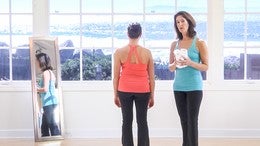Premium Continuing Education workshop
You can view a 2 minute preview. For details, scroll down below the video.
Description
Objectives
- Learn the definition of structural versus functional scoliosis
- Understand the mechanics of scoliosis and its health risk
- Assess the type of scoliosis
- Use exercises to specifically minimize the curve and to create elongation with a balance of mobility and stability
- Learn a three planar approach to movement choices in programming
- Teach on the Mat, Pilates apparatus using props, and learn specific cues directed toward scoliosis
We want to thank Jean Claude West for the 3D imaging.Once you purchase the workshop, you will have access to the pdf attachment. It will be located underneath the description.
About This Video
Continuing Education Credits
If you complete this workshop, you will earn:
3.0 credits from Pilates Association Australia (PAA)
The Pilates Association Australia (PAA) is an independent and not-for-profit organization established by the Pilates industry as a regulatory body for control of quality instruction, member support, and integrity within all legitimate approaches to the Pilates Method.
3.0 credits from National Pilates Certification Program (NPCP)
The National Pilates Certification Program is accredited by the National Commission for Certifying Agencies (NCCA)
Workshops: Body Pathologies and Conditions
Comments
love your info.
i just wanted to know if you have any more advice for me I am starting to work with a young lady that wears a brace. I have not seem she yet. but i usume that wearing a brace make her quite weak and lack of body awareness. is there other exercise than what i saw in you seminar i should start with
thank
Carole
1. How would I tailor the exercises you show for mat work as I don't have access to a reformer?
2. I live in the UK and would really appreciate some contacts for pilates instructors who specialise in scoliosis?
You need to be a subscriber to post a comment.
Please Log In or Create an Account to start your free trial.


































